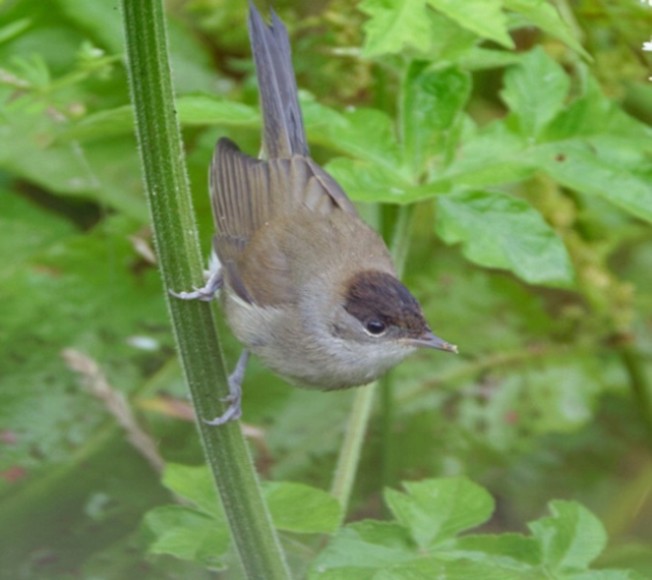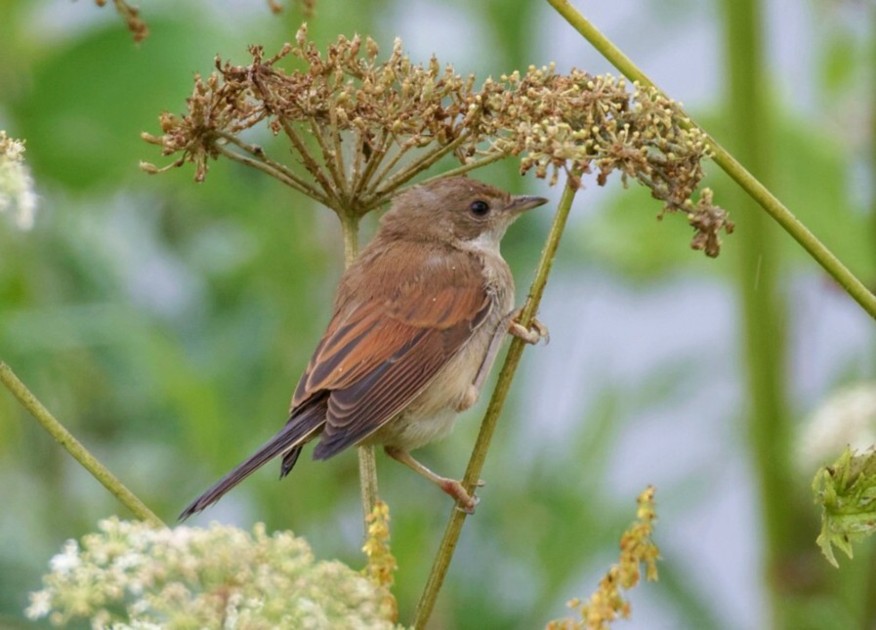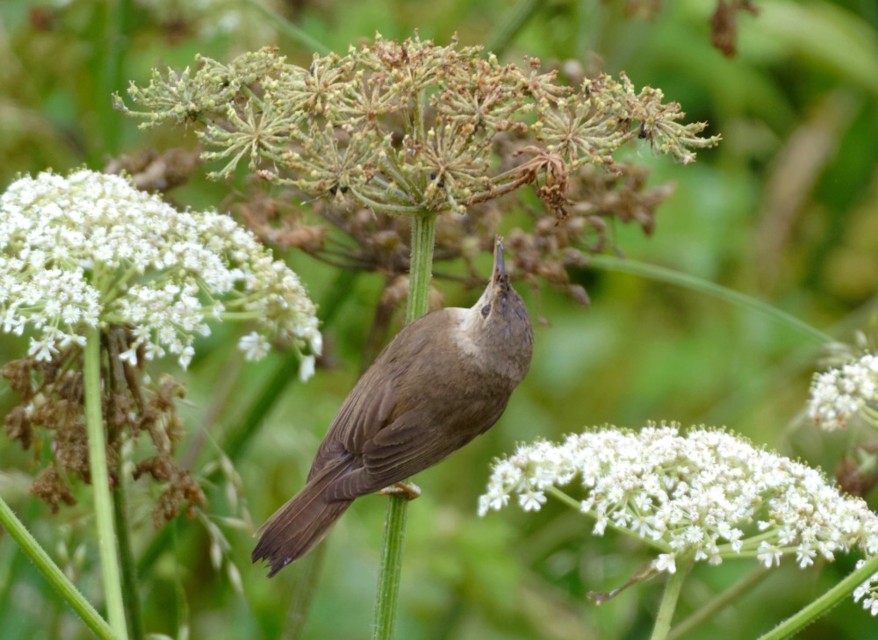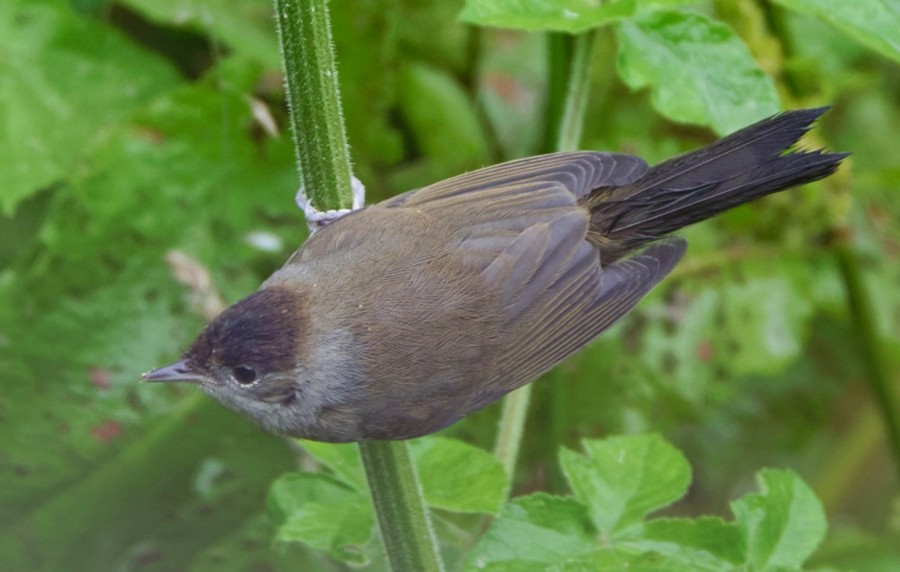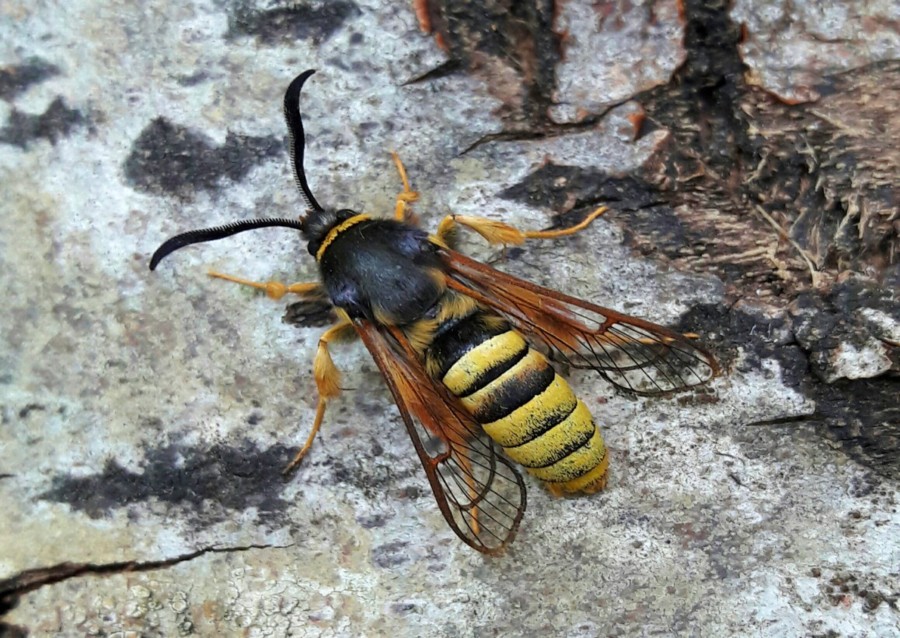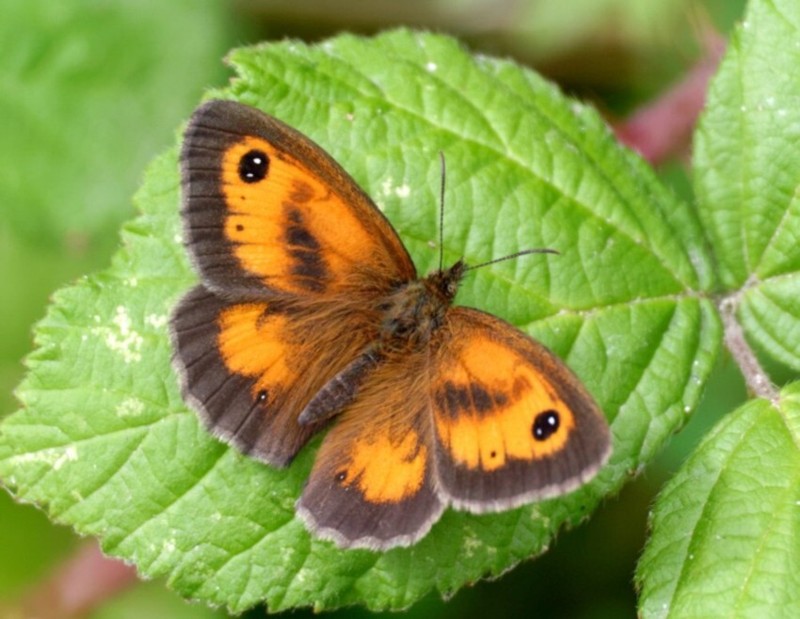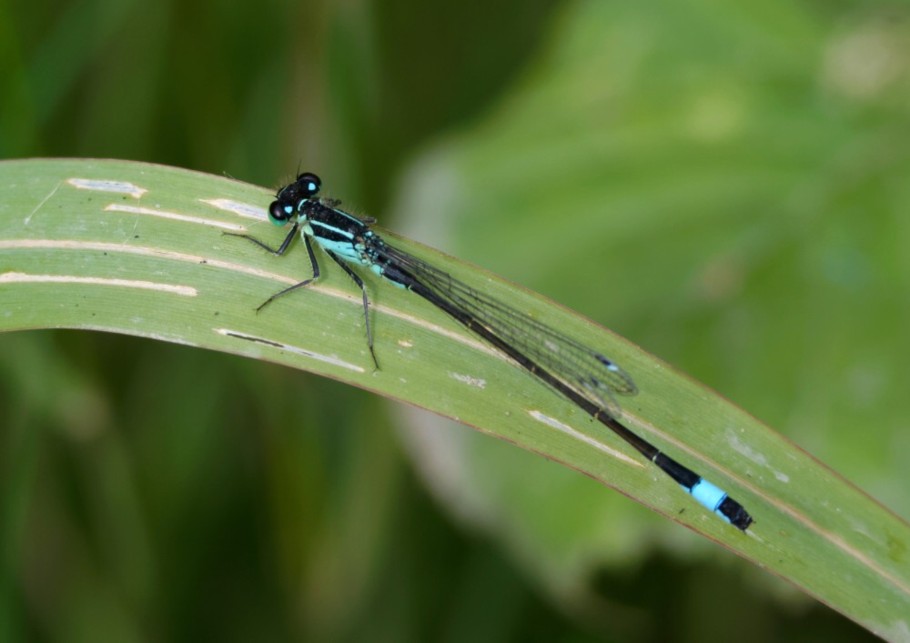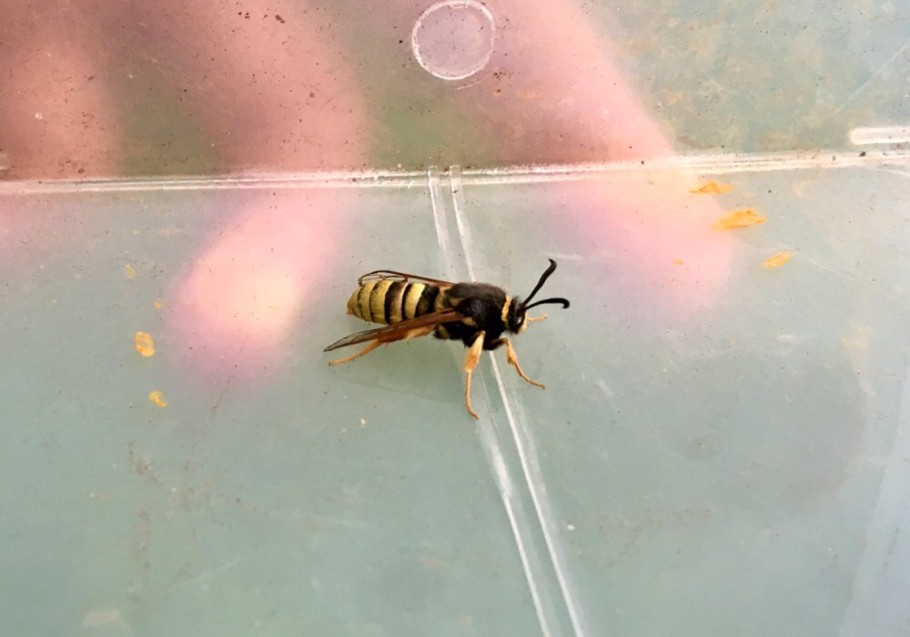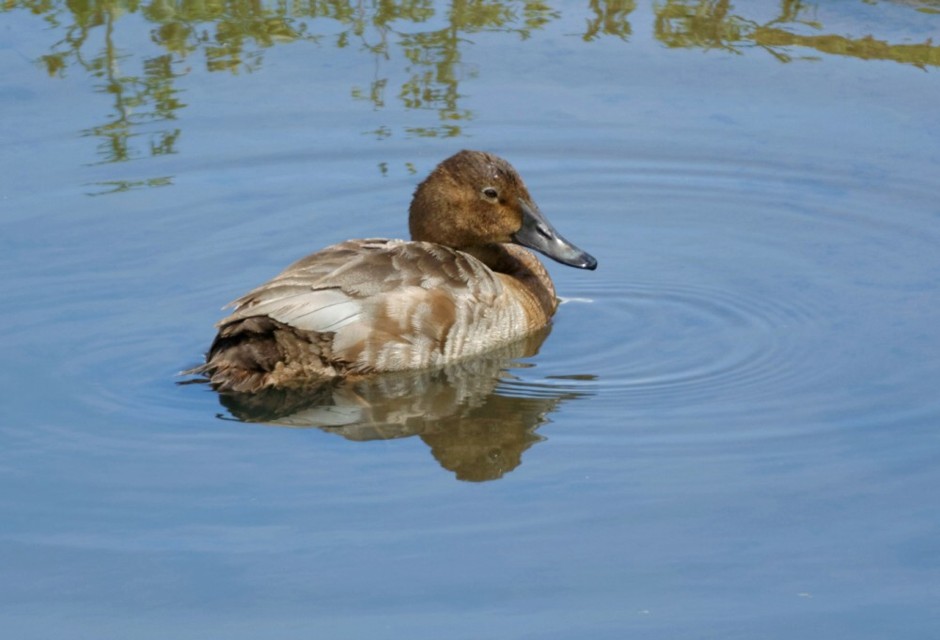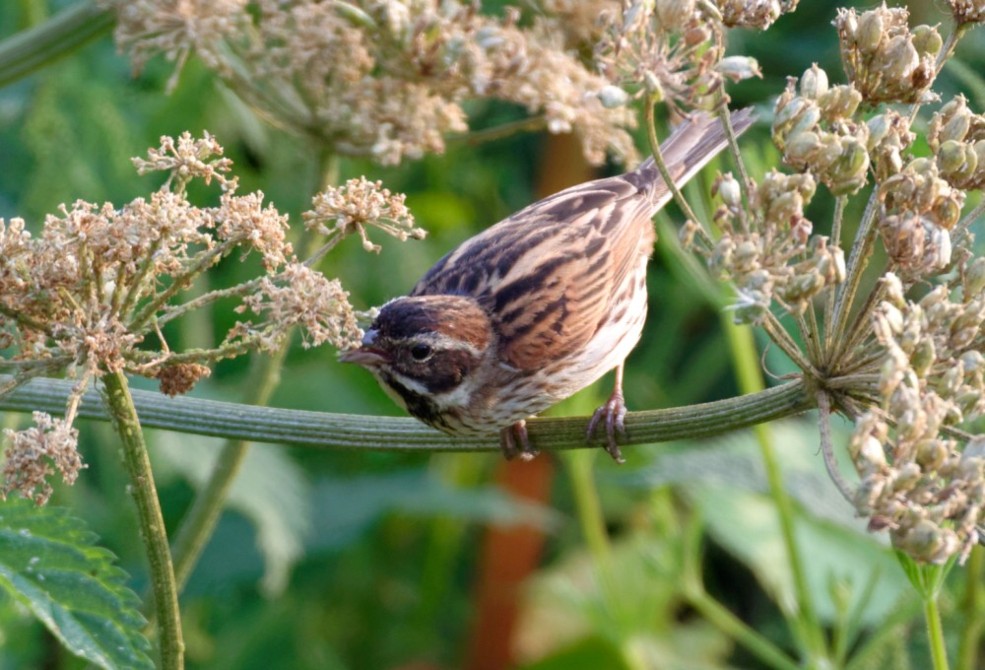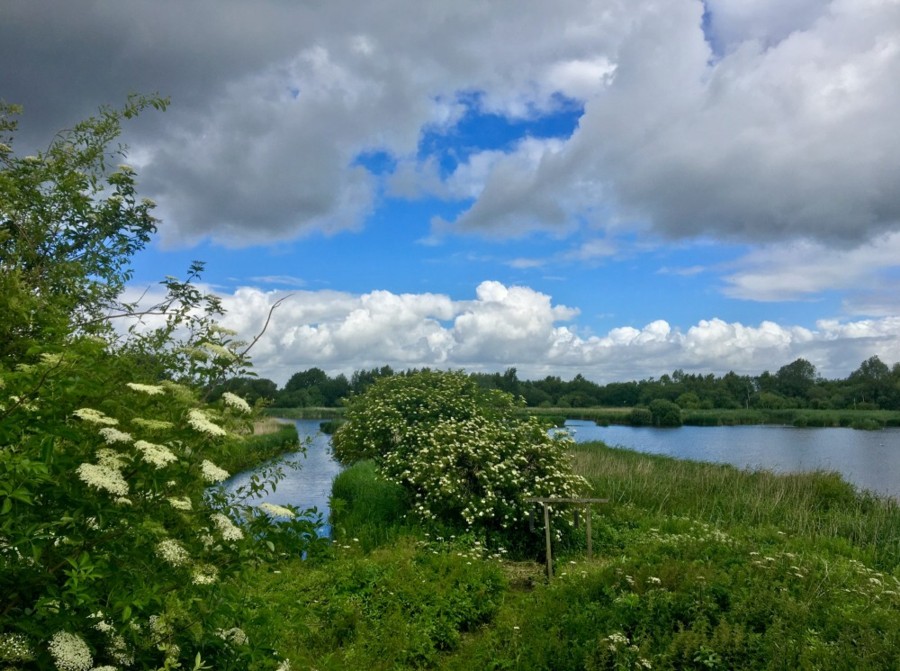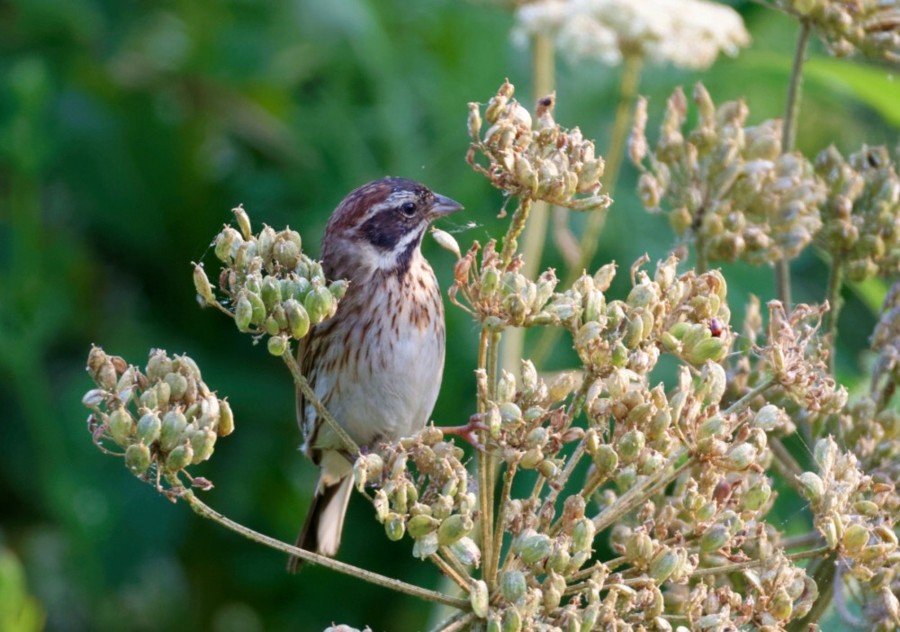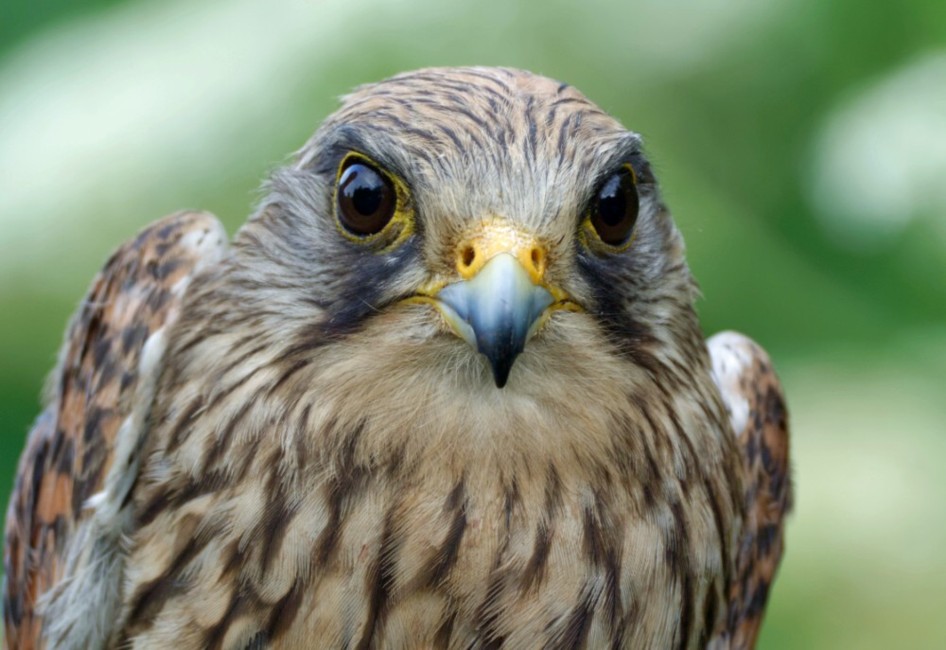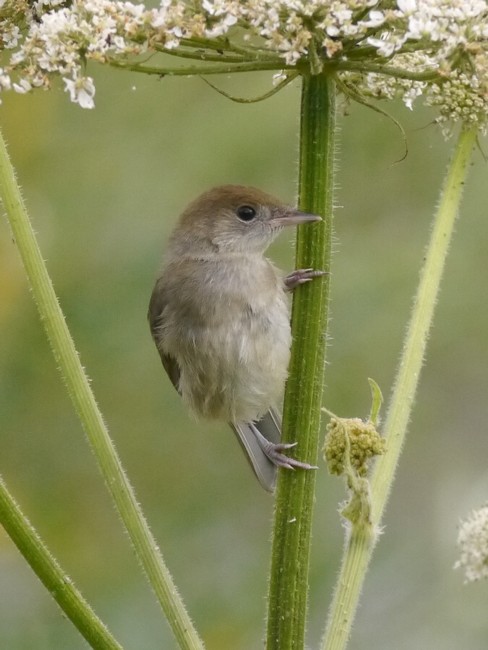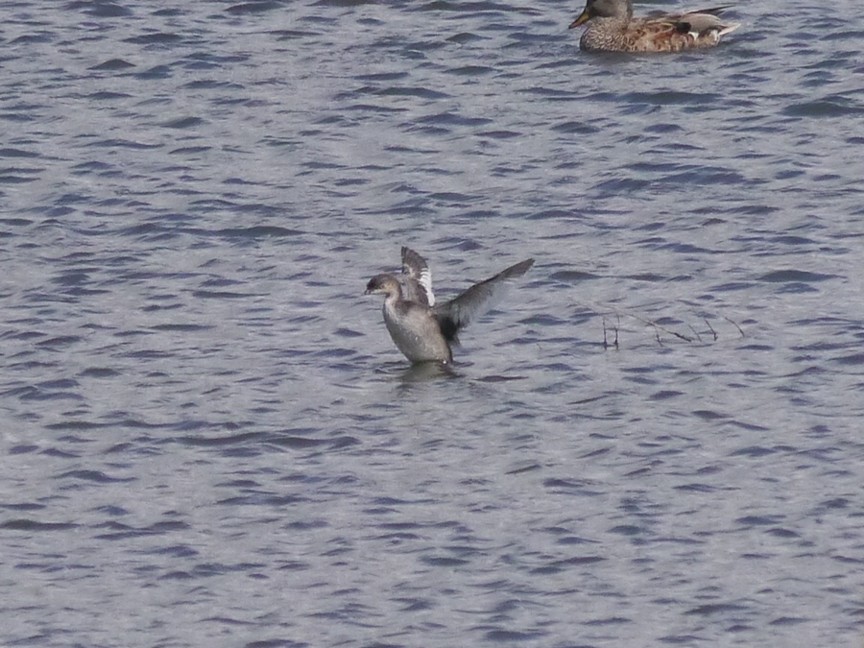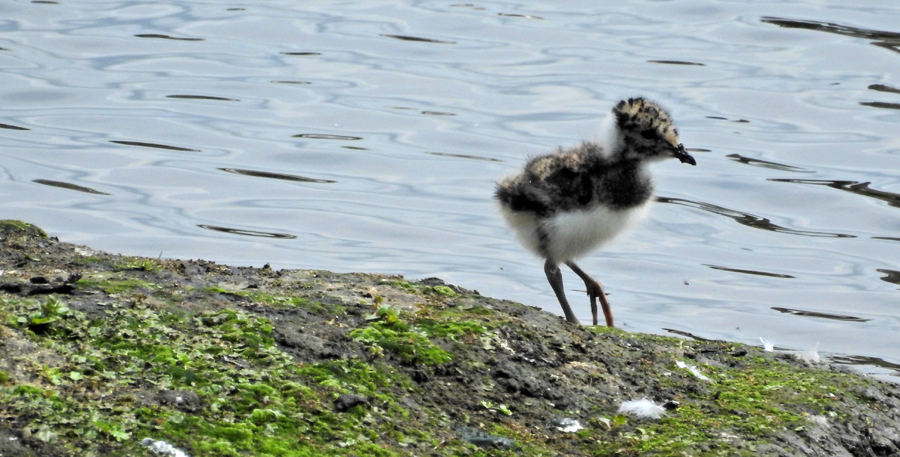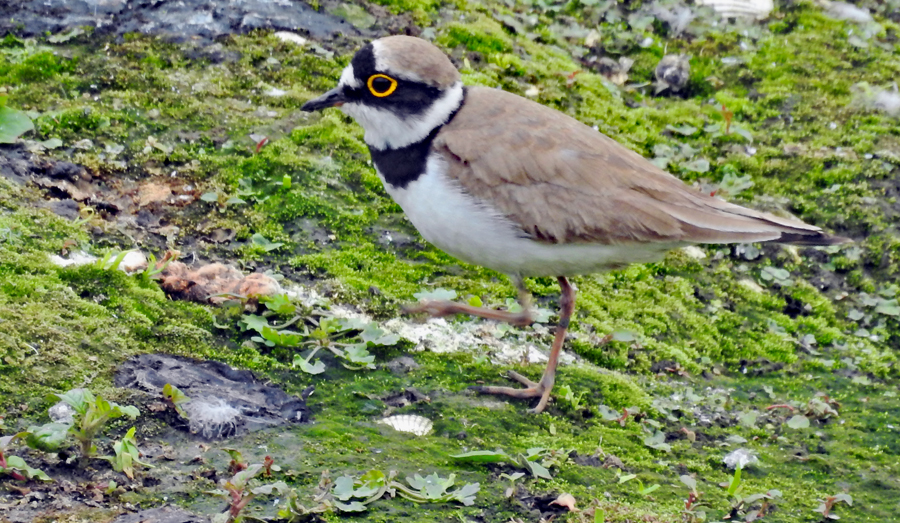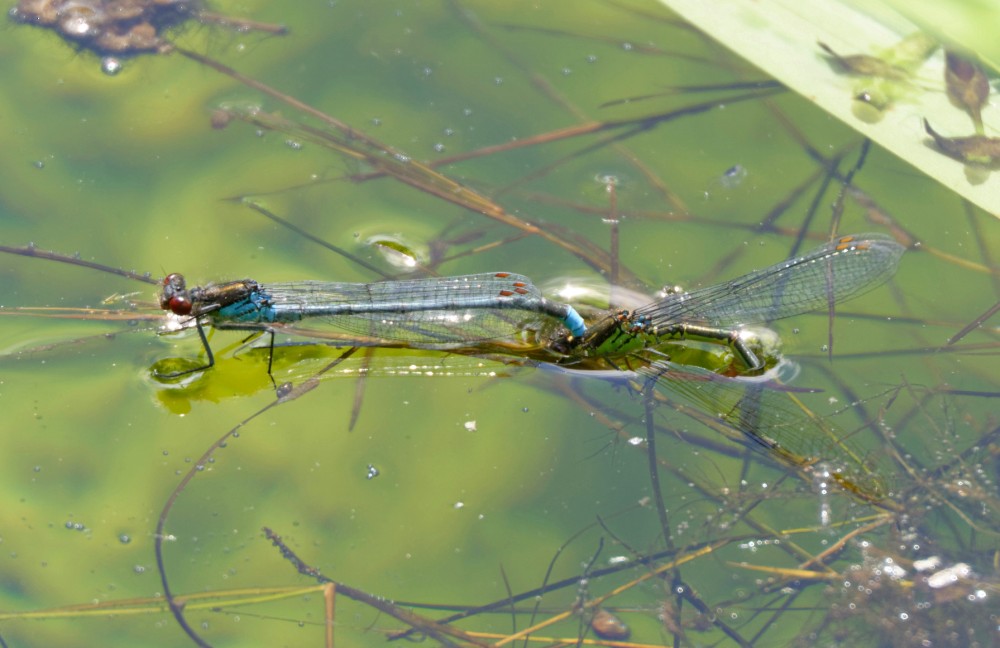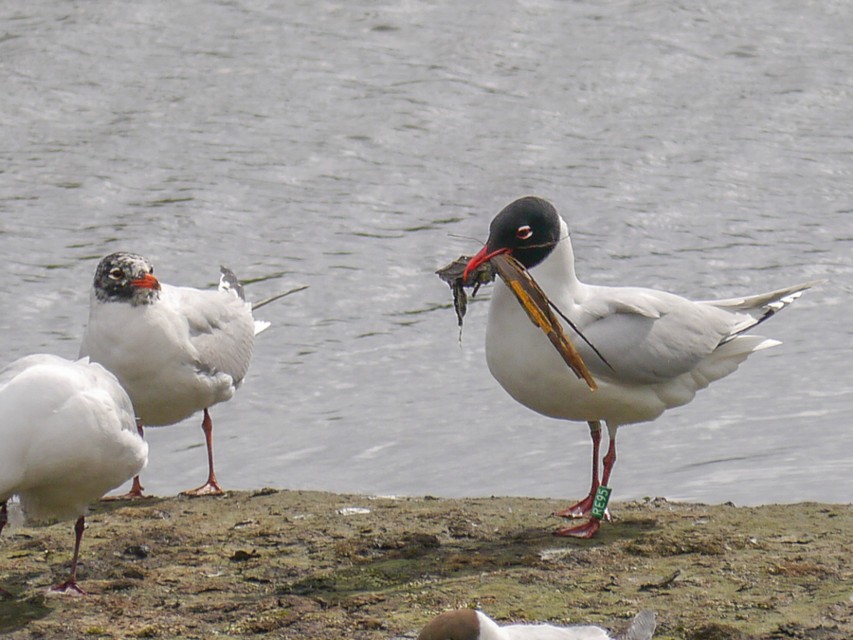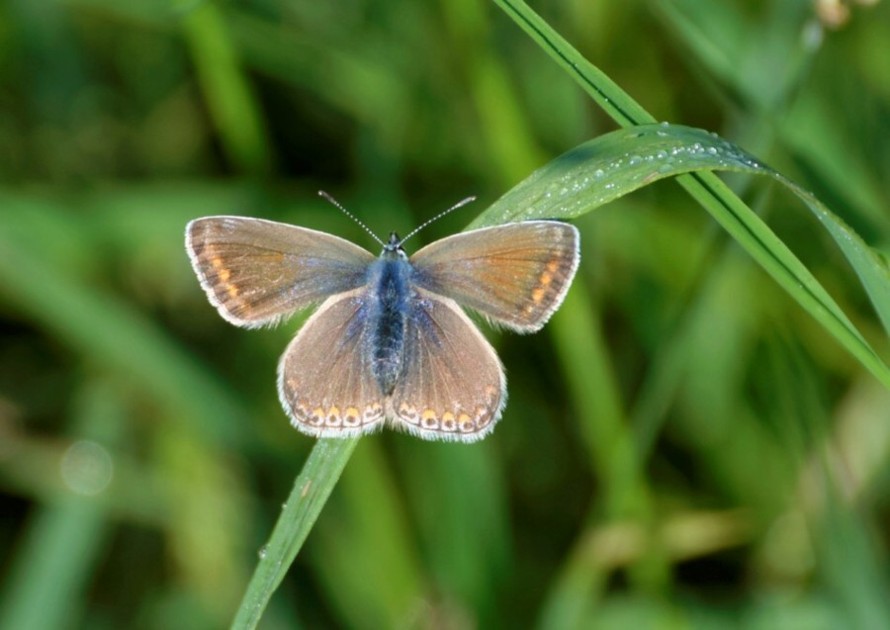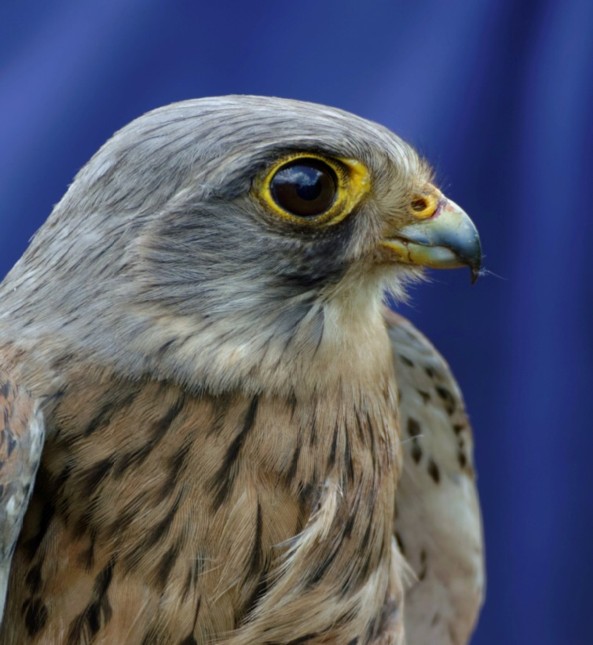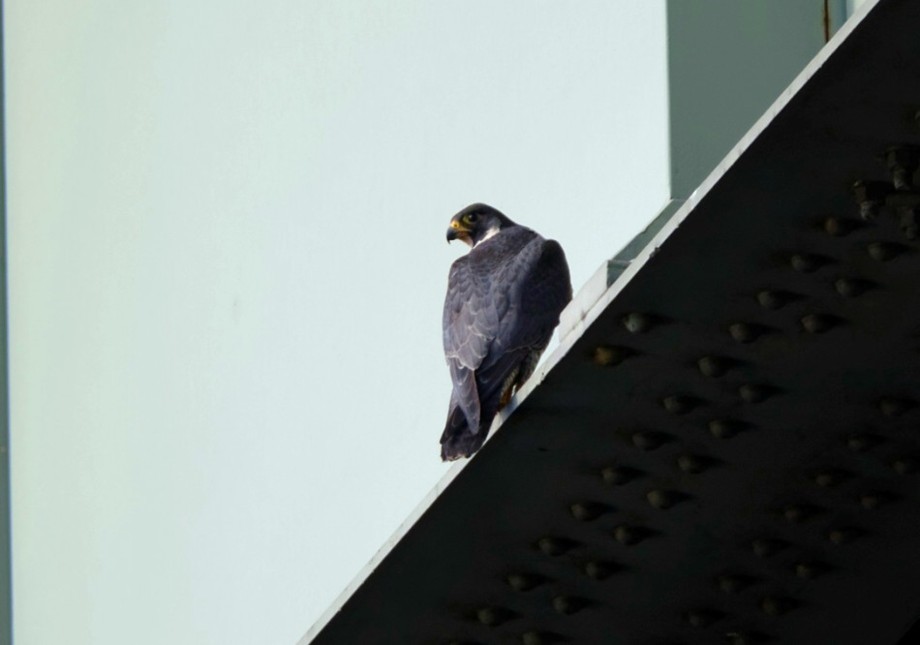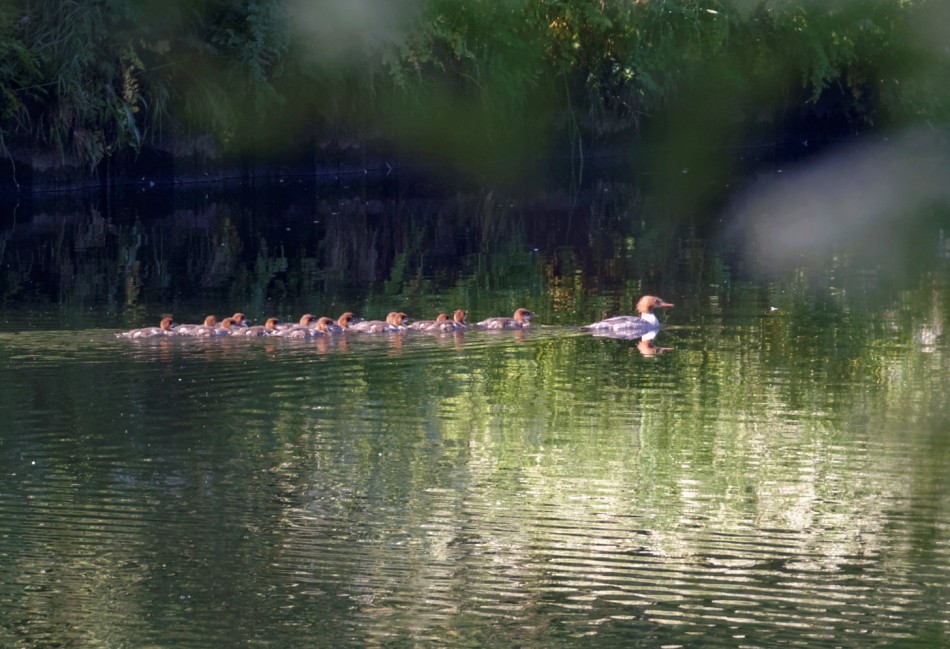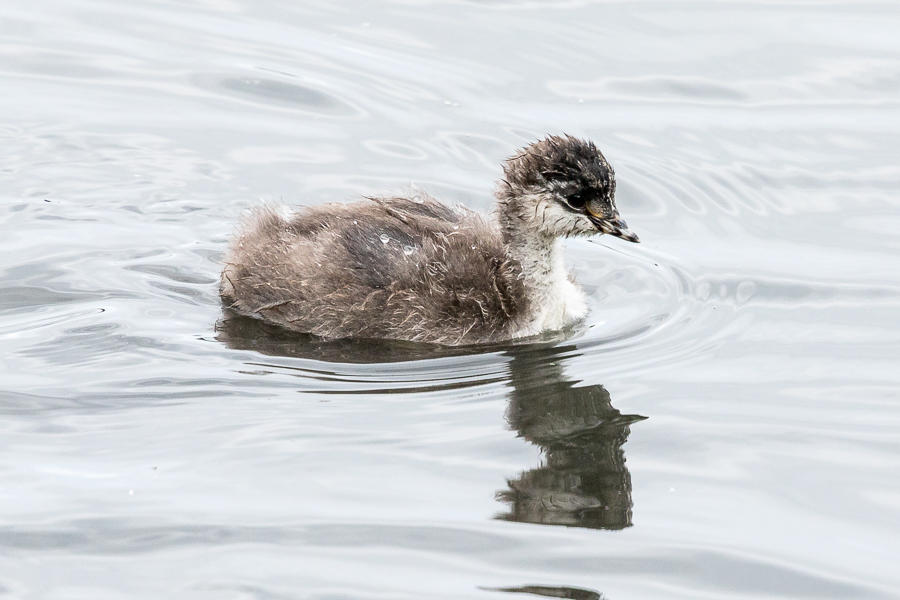Woolston Eyes Monthly Sightings
2017-06-28
Numbers of Gadwall continue to increase. Evening visits to No.3 bed and the Loop on 26th and 27th produced 247 and 69 respectively, an overall total of 316. Coot totalled 107. Other sightings of note were 3 Tufted broods on the Loop where about 20 House Martins and 50 Swifts were present. A brief search of the Sandpit Pond area revealed 10 Bee Orchids.
Submitted by: Dave Hackett
2017-06-28
Photo of a juvenile Reed Warbler, showing fault bars on the tail, due to erratic feeding while in the nest, as a result of bad weather.
Cheers David
Submitted by: David Bowman
2017-06-28
On a morning of constant drizzle, I decided to hole up in the Morgan Hide to see what I could find. Best birds were at the beginning and end, with a Hobby stooping through a cloud of 70 Swifts and 30 Sand Martins soon after arrival and then a flock of 34 Black-tailed Godwits, which flew east in mid-afternoon. In between, highlights were: our 8th brood of Black-necked Grebes, a new brood of 5 Gadwall, a drake Ruddy Duck, 68 Coot, a surprising 600 Black-headed Gulls flushed from the reed-bed by a passing Buzzard after previously counting 112 young gulls plus 27 sitting birds. Otherwise, I entertained myself by trying to photograph the numerous young warblers which were feeding in front of the hide, which included Reed Warblers, Whitethroats, Blackcaps and a Lesser Whitethroat. Frustratingly, but typically, the latter wouldn’t sit up and have its photo taken.
Photo of a juvenile male Blackcap
Cheers David Bowman
Submitted by: David Bowman
2017-06-25
Here is Kieran Foster’s shot of yesterday’s Lunar Hornet Moth from No.3 bed at Woolston Eyes - a real beauty and a first for all of us.
Cheers David Bowman
Submitted by: David Bowman
2017-06-24
Photo of a mating pair of Alder Leaf Beetles from this morning.
Cheers David
Submitted by: David Bowman
2017-06-24
Photo of a Narrow-bordered Five-Spot Burnet Moth from this morning.
Cheers David
Submitted by: David Bowman
2017-06-24
Photo of a Blue-tailed Damselfly from this morning.
Cheers David
Submitted by: David Bowman
2017-06-24
The usual early start produced a couple of surprises, one good and one not so good. First, the birding highlights, which included: 3 Little Ringed Plovers, 1 Common Tern, no less than 9 broods of Tufted Duck, 1 drake Ruddy Duck and a minimum of 6 adults Black-necked Grebes with 5 young. As we were walking off No.3 bed to survey No.1 bed, we got a call from Kieran Foster, to say that he’d just found a new species for the Reserve in one of his mist nets. Well, the last time we had a call to that effect, it turned out to be an ultra-rare White-crowned Sparrow. Not so rare this time and not a bird, but equally delightful - a Lunar Hornet Moth, a clear-wing moth and a species I’d always wanted to see. Then, onto No.1 bed, where disappointingly, we couldn’t locate any of the recently fledged young Peregrines. Then, by coincidence, a phone call from our good friend Jane Cullen to say that a young Peregrine from our breeding site had been found and taken into care. We’re currently investigating the circumstances surrounding this to try and ensure that the bird is properly cared for and released back into the wild. A phone shot of the Lunar Hornet Moth
Cheers David Bowman (with David Spencer, Brian Martin, Helen Wynn, Dave Steel, Les Jones, Brian Baird and Rob Home)
Submitted by: David Bowman
2017-06-21
I started the day with my final breeding wildfowl survey on No.4 bed. On the loop were 5 Coot and 4 Pochard broods including a new brood of 4 very small young. Also a Tufted brood of 7 and a pair of Great-crested Grebes with 2 small young. 44 Gadwall and 32 Coot were good totals. On No.3 bed were 163 Gadwall and 71 Coot plus 4 broods. There were 4 Tufted broods and 65 juvenile Black-headed Gulls. Two juvenile Black-necked Grebes were in front of the south screen. Canada Geese totalled 59 and a single Greylag! Overall counts of 207 Gadwall and 105 Coot for Nos. 3 and 4 beds were excellent for June. Butterflies were plentiful at the eastern end of the reserve and the following totals include a survey of the northern section of No.1 bed on Sunday; 105 Meadow Brown, 19 Common Blue, 8 Large Skipper, 11 Red Admiral and 8 Comma.
Submitted by: Dave Hackett
2017-06-21
Photo of a Reed Bunting in front of the Morgan Hide this morning.
Cheers David
Submitted by: David Bowman
2017-06-21
Decided to dodge the heat of the day by making a 5.00 am start on No.3 bed this morning. Well worth it, too, with 4 Black-tailed Godwits dropping down in the half-light and feeding voraciously before being driven off by a pugnacious Moorhen. We’ve recently erected some Swift nest-boxes on the Morgan Hide and a tape player, on a timer, plays Swift calls at dawn and dusk. It was pleasing to watch 30 plus Swifts dashing round the hide this morning. Hopefully, some will return to breed next year. 240 Starlings then came out of a reed-bed roost and a Hobby cruised past the hide, followed by a Raven. Scanning for broods, with Bert Lloyd and John Verdon, later in the morning, proved rewarding, with two new Tufted Duck broods, of 5 and an amazing 14 young located, to add to the two broods from earlier in the week. Seven Black-necked Grebes, including one large young were also picked out. Finally, a Kingfisher brought a flash of colour, perching briefly before disappearing in the direction of the Linley Hide.
Photo of a Reed Bunting from in front of the Morgan Hide Cheers David Bowman
Submitted by: David Bowman
2017-06-17
A 6.30 am start, this morning, enabled us to get the final No.3 bed breeding wildfowl survey of the year done before the heat became too oppressive. Sightings of interest from around the bed included: Garden Warbler, Grasshopper Warbler, Cetti’s Warbler, Water Rail, Nuthatch and Hobby. The ringing team were having a good morning ,too, with a female Kestrel and 5 juvenile Willow Tits amongst the c.180 birds caught. Then it was down to No.1 bed to check on the progress of the breeding Peregrines. The young have now fledged and moved to a pretty safe place. The male was on guard and one juvenile head was visible. Hopefully, the other two were tucked out of sight close by. A dragonfly survey of one of the nearby pools then turned up: 3 Emperor Dragonflies, 7 Four-Spotted Chasers, 1 Black-tailed Skimmer, 2 Brown Hawkers and scores of Azure and Common Blue Damselflies. A few butterflies were also noted, including: 5 Common Blues and 4 Small Skippers.
The photo is of the female Kestrel, ringed this morning on No.3 bed by Kieran Foster et al.
Cheers David Bowman (with David Spencer, Dave Steel, Alan Warford, Helen Wynn, Kelly Ainsworth, George Dunbar, Brian Baird, Kenny McNiffe, Amanda Fiddler, Terry and Robert Home)
Submitted by: David Bowman
2017-06-16
A very productive few hours divided between No.3 bed and the Loop of No.4. The two highlights were a new Black necked Grebe brood(the 5th or 6th) in the north east channel. They were only visible for a very short time before disappearing into one of the side channels and not reappearing. There was one small head visible on the adult’s back. Also impressive were the numbers of Gadwall. A full count on both beds produced a total of 178 adults-114 on No.3.A minimum of 45 fledged or near fledged Black headed Gull young.The first Tufted brood was found by Dave Spencer, just 1 young.Also good numbers of Coot ca.70 adults,including 37 in front of Linley hide. Thirteen Coot broods seen including 2 new on both the Loop and No.3.One brood of Pochard with 2 growing young on No.3 and 3 broods all of 4 growing young on the Loop.A new brood of Mallard (3 young)by south screen.In the Sandpit Pond area a total of 5 singing Willow Warblers and a fine Fox that was so intent on stalking prey that it was unaware of my presence for a time, jumping high into the air and down into the vegetation.A recently fledged brood of Whitethroat near the south meadow.
Submitted by: Brian Martin
2017-06-15
Photo of one of three independent juvenile Black-necked Grebes seen from the South Screen this morning. Another juvenile, almost certainly a different bird, was seen from the John Morgan Hide in the northeast corner. Also seen today was a pair of adult Mediterranean Gulls.
Submitted by: David Spencer
2017-06-14
Had our first visit to woolston eyes for a while.We only had one black necked grebe other sightings included pochard shoveler great crested grebe five greylag two lapwing with one chick one LRP showed for half an hr.The feeders very quiet walking around the reserve saw whitethroat greenfinch plenty of chiff chaff calling very surprised to see so few butterflies one speckled wood one tortoiseshell still enjoyed the day.Roger and Gill Riley
Submitted by: Roger Riley
2017-06-10
Another fascinating morning on No.3 bed at Woolston Eyes started at 6.30 am, huddled in the Morgan Hide in driving rain. The birds, though, had to tough it out, with young Lapwing and Black-headed Gulls on the scrape getting a real soaking. Over head, more than 200 Swifts were brought down by the weather, during the morning, along with a few Swallows and Martins. We were confident (!) that we’d eventually find the odd stray migrant amongst them and were rewarded with a Greenshank which dropped briefly onto the scrape and 4 Common Terns which passed through after a brief stop-over. Of note also were three young Black-necked Grebes with a few adults, two drake Ruddy Ducks and another new Pochard brood, probably our 17th of the year so far. The morning drew to a close at 1.00 pm, with an elegant Hobby stooping along the east bank, scattering Swifts as it passed.
Photo of a pair of Red-eyed Damselflies oviposting near the footbridge yesterday.
Cheers David Bowman (with David Spencer, Alan Warford and George Dunbar)
Submitted by: David Bowman
2017-06-09
At the moment No.3 bed is a bit of a smorgasbord for predators. With many scores of recently fledged young around the bed, there are easy pickings to be had. A Fox was prowling in the reed-bed, Hobby, Peregrine,Buzzard and Sparrowhawk made appearances and, perhaps most deadly, were the sextet of Lesser Black-backed Gulls which cruised round and took one of a brood of five Shelducks and also a well-grown Coot chick. Somehow, the Lapwing pair on the Morgan Hide scrape is still managing to keep one of their three chicks in the land of the living. On a more positive note, two Mediterranean Gulls made seven for the week, the two drake Ruddy Ducks are still around, at least 28 fledged Black-headed Gull chicks were noted and there were plenty of Black-necked Grebes to be seen.
Photo of an adult Black-necked Grebe taken from the Morgan Hide
Cheers David
Submitted by: David Bowman
2017-06-08
The pair of 2nd summer Mediterranean Gulls were again on the scrape today and later in the morning were joined by a third bird 2nd summer bird. Yesterday one of the pair was collecting sticks and leaves; it would be nice to think it was gathering nesting material but as it dropped the material back in the water it was probably some sort of pair bonding behavior. The Lapwing chick continues to grow and the brood of Shelduck were also on the scrape. Four Common Terns flew west mid-morning.
Submitted by: David Spencer
2017-06-07
A dry but blustery day after two days of rain. I started the day on No.4 bed where I disturbed a new brood of 6 Mallard young on the path to the north of the loop. Over 40 Gadwall were on the loop but only one Pochard brood was visible; presumably the others were in cover due to the windy conditions. On No.1 bed were three Little Grebe broods and one of the Peregrines was on the viaduct. A brood of 11 small Mallard chicks was on the fields to the north of No.2 bed where the resident Cetti’s Warbler was in song. On No.3 bed the Lapwing brood is now down to one, the others having disappeared over the weekend. It swam between the islands and appears to be thriving! A new brood of 5 Shelduck was on the shell island and later took to the water with the adults. The creche of Canada Geese was again blocking the path between the John Morgan and Frank Linley Hides! Butterflies were few and far between, but 13 Speckled Wood, 2 Common Blue and a Red Admiral were present.
Submitted by: Dave Hackett
2017-06-04
Loop Of No.4 bed I spent several hours on the Loop and it proved a rewarding time. A total of 4 Pochard broods adds to the already impressive number of broods on No.3 bed.There were also 2 broods of Mallard-one of 10 very small young and the other of 4 quite large young.One of the highlights was a minimum of 9 adult Little Grebes including one feeding a small fish to a full grown chick. Two Kingfishers were flying around the channels and may be from a nest on the river.Coot have clearly bred well on the Loop with at least 8 or 9 broods seen of various ages.A total of 64 adult Gadwall were present with birds arriving all the time,perhaps disturbed off No.3 by the Clay Pigeon shoot.Also,present were 2 Grey Herons,2 Mute Swans,7 Lesser Black backs and 1 Great crested grebe.Three Lapwings were calling constantly and a pair was settled on a small island.Other wildfowl included 3 Shoveler (2 drakes) and 7 Tufted Duck. An amazing brood of 7 fully grown Moorhen young were with an adult on the Sandpit Pond with a well grown young also on the Loop. June is the month for Orchids and several hundred spikes of Marsh Orchid are currently providing an impressive display by the Sandpit Pond together with the first emerging Bee Orchids.
Submitted by: Brian Martin
2017-06-03
Photo of a female Common Blue on No.1 bed this morning.
Cheers David
Submitted by: David Bowman
2017-06-03
Photo of an adult Kestrel ringed on No.3 bed this morning.
Cheers David
Submitted by: David Bowman
2017-06-03
Photo of a Peregrine guarding the nest-site from this morning.
Cheers David
Submitted by: David Bowman
2017-06-03
Well, it’s not every day (or even every year) that we get to add another breeding species to the Woolston Eyes list, but today was one of those days. We started at 6.30 am on No.3 bed, where the 3 drake Ruddy Ducks showed well, along with a maximum of 11 adult Black-necked Grebes plus 3 young. Pochard broods for the bed now total 11, with at least another 3 on the Loop of No.4 bed, so we could be heading for a record year for this very scarce UK breeder. Then it was onto No.1 bed for a breeding bird survey. This started well, with 3 Peregrine young being well guarded by the resident pair under the Viaduct. Then a pair of Little Ringed Plovers gave hope that they might breed again this year. It finished in spectacular style, when a female Goosander, with 14 chicks, slid into the Canal by the Viaduct - a first and highly unexpected breeding record for the Reserve. Back on No.3 bed Kieran Foster and his ringing team were also having a good day, with both adult Buzzard and Kestrel caught in mist-nets and ringed. They also reported a pair of adult Mediterranean Gulls from earlier in the morning.
A poor photo of the Goosander brood! Cheers David Bowman (with David Spencer, Alan Warford, Dave Steel, Helen Wynn, Brian Baird, Sue Haddock and Les Jones, with the bonus of Gem Crombleholme and Sharon White’s company later in the morning)
Submitted by: David Bowman
2017-06-01
My final Common Bird Survey of the year on the northern half of No.4 bed produced some good totals. Most species were present in larger numbers than in 2016 which is encouraging. Of interest were 28 Whitethroat, 14 Song Thrush, 22 Chiffchaff, 21 Wren, 12 Blackcap, 5 Sedge Warbler, 26 Blackbird and 3 Reed Warbler. The great majority of these were singing males.
Submitted by: Dave Hackett

